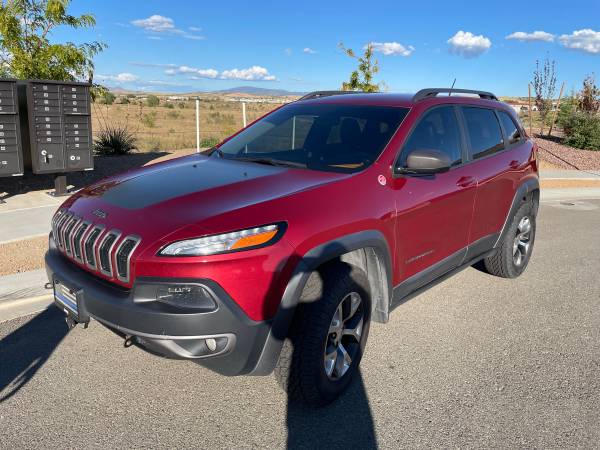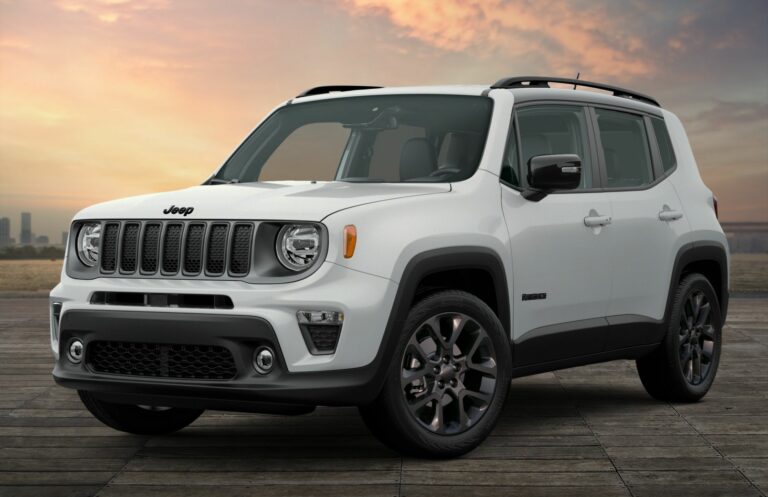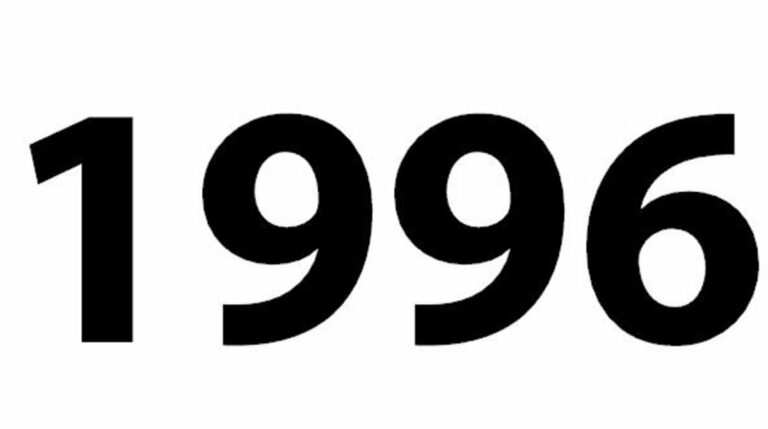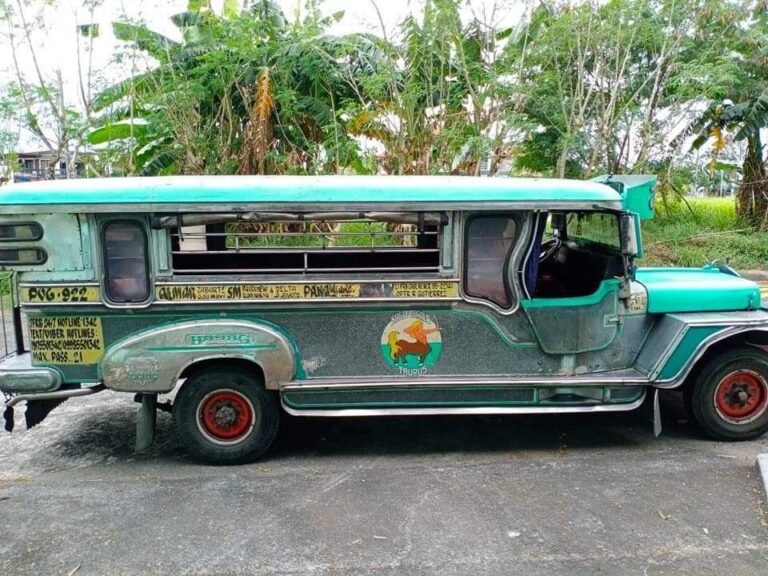2000 Jeep Cherokee Lifted: Elevating an Icon for Off-Road Domination
2000 Jeep Cherokee Lifted: Elevating an Icon for Off-Road Domination jeeps.truckstrend.com
The 2000 Jeep Cherokee XJ holds a revered status among off-road enthusiasts and automotive purists alike. Known for its unibody construction, robust inline-six engine (the legendary 4.0L), and surprising capability right off the showroom floor, the XJ is a testament to rugged simplicity. However, for many, the stock configuration is merely a canvas. Enter the "2000 Jeep Cherokee Lifted" – a transformation that elevates this iconic SUV from a capable daily driver to an formidable off-road beast. Lifting an XJ involves modifying its suspension to increase ground clearance, accommodate larger tires, and enhance its articulation, unlocking a new realm of adventures on trails, rocks, and mud. This comprehensive guide will delve into the world of lifted 2000 Jeep Cherokees, exploring the why, how, and what-ifs of this popular modification.
Why Lift Your 2000 Jeep Cherokee XJ? The Benefits Unveiled
2000 Jeep Cherokee Lifted: Elevating an Icon for Off-Road Domination
The decision to lift a 2000 Jeep Cherokee is rarely purely aesthetic, though the aggressive stance is certainly a bonus. The primary motivations are rooted in performance and capability:
- Increased Ground Clearance: This is perhaps the most significant benefit. A lifted XJ can clear larger obstacles such as rocks, logs, and deep ruts without damaging crucial undercarriage components like differentials, transfer cases, and exhaust systems.
- Ability to Fit Larger Tires: More ground clearance directly translates to the ability to install larger diameter tires. Larger tires offer a greater contact patch, improved traction on varied terrains, and effectively increase the vehicle’s ground clearance even further from the lowest points (the axles).
- Improved Approach, Departure, and Breakover Angles: Lifting the vehicle raises the bumpers and the center of the chassis. This improves the angles at which the vehicle can approach obstacles without scraping the front, clear obstacles under the middle, and descend without dragging the rear.
- Enhanced Suspension Articulation: While not inherent to simply lifting, a well-designed lift kit often includes components (like longer control arms and shocks) that allow the wheels to move up and down independently over a greater range. This "articulation" helps keep all four wheels on the ground, maximizing traction on uneven terrain.
- Aggressive Aesthetics: Let’s be honest, a lifted XJ just looks cool. The enhanced stature and larger tires give it an undeniably rugged and capable appearance that turns heads.

Understanding Lift Kits for the XJ: Components and Types
Lifting an XJ isn’t a one-size-fits-all endeavor. Lift kits come in various forms, each offering different levels of performance, complexity, and cost.
Types of Lift Kits:
- Budget Boost (1-2 inches): These typically involve coil spacers for the front and extended shackles or add-a-leafs (AAL) for the rear. They are the most affordable way to gain a small amount of lift and clear slightly larger tires (e.g., 30-31 inches). They retain most of the stock ride quality but offer minimal performance improvement.
- Short Arm Lift Kits (2-4.5 inches): These are the most common and popular choices. They replace front coil springs and rear leaf springs, often including new shocks, control arms (short arms), a track bar, and sway bar disconnects. They offer significant gains in clearance and allow for 31-33 inch tires. Ride quality can vary depending on component quality.
- Long Arm Lift Kits (4.5+ inches): Designed for serious off-roaders, long arm kits relocate the control arm mounting points further back on the frame, using much longer control arms. This provides a flatter control arm angle, which significantly improves suspension articulation, reduces driveline vibrations, and offers a smoother ride over rough terrain compared to short arm kits at similar heights. They are more complex, expensive, and require cutting and welding for installation. These are ideal for 33-35 inch tires.

Key Components of a Lift Kit:
- Coil Springs (Front): Replaces stock springs to provide lift height.
- Leaf Springs (Rear): Replaces stock springs for lift and load-carrying capacity. Often, full leaf packs are preferred over "add-a-leafs" for better ride quality and longevity.
- Shocks Absorbers: Longer shocks are essential to accommodate the increased suspension travel. Matching shocks to spring rate and intended use is crucial for ride quality.
- Control Arms (Upper & Lower): These link the axle to the frame. Longer control arms are needed for higher lifts to correct caster angles and prevent binding. Adjustable control arms allow for fine-tuning.
- Track Bar: This bar centers the front axle under the vehicle. A longer, adjustable track bar is required for lifted Cherokees to prevent axle shift and "Death Wobble."
- Sway Bar Disconnects: These allow the front sway bar to be disconnected for increased articulation off-road, then reconnected for safe on-road driving.
- Brake Line Extensions: Longer brake lines are often necessary to prevent over-stretching or breaking when the suspension fully articulates.
- Slip Yoke Eliminator (SYE) & CV Driveshaft: For lifts typically 3-4 inches and above, the increased driveline angle can cause vibrations. An SYE converts the transfer case output to a fixed yoke, allowing for a Constant Velocity (CV) driveshaft which handles greater angles smoothly.
- Bump Stops: Extended bump stops prevent tires from rubbing fenders and protect shocks from bottoming out.

Planning Your Lift: Important Considerations
Before you purchase a lift kit, careful planning is paramount to avoid costly mistakes and ensure a successful outcome.
- Intended Use: This is the most critical factor.
- Daily Driver/Light Trails: A 2-3 inch short arm lift with 30-31 inch tires might be perfect.
- Weekend Warrior/Moderate Trails: A 3-4.5 inch short arm lift with 31-33 inch tires offers a great balance.
- Dedicated Rock Crawler/Extreme Off-Road: A 4.5+ inch long arm lift with 33-35+ inch tires will be necessary, often requiring extensive additional modifications.
- Budget: Lift kits range from a few hundred dollars to several thousands. Factor in the cost of tires, wheels, potential installation, and collateral upgrades (SYE, gearing, steering, brakes) which can easily double or triple the initial lift kit cost.
- Tire Size: Decide on your target tire size before buying the lift. The tire size dictates the minimum lift height and whether fender trimming will be required.
- Gearing: Larger tires effectively change your final drive ratio, making the engine work harder and reducing acceleration and fuel economy. For tires 33 inches and above, re-gearing the axles (e.g., from 3.55 to 4.56 or 4.88) is highly recommended for optimal performance and to reduce strain on the drivetrain.
- Axle Strength: The stock Dana 30 front and Dana 35 rear axles are generally adequate for stock tires and light off-roading. However, with larger tires (33+ inches) and aggressive off-roading, the Dana 35 is particularly prone to failure. Upgrading to a more robust Dana 44 or Ford 8.8 rear axle, and potentially strengthening the Dana 30 front (chromoly shafts, stronger U-joints), becomes essential.
- Steering Components: Larger tires and increased stress from off-roading can quickly wear out stock steering components. Upgrading to heavier-duty tie rods, drag links, and a stronger steering box brace is a wise investment.
- Braking System: Larger, heavier tires put more strain on the braking system. Consider upgrading to larger rotors, calipers, or even disc brakes in the rear (if you have drums) for improved stopping power.
- Legalities: Check local laws regarding maximum vehicle height, tire protrusion, and fender flares.
The Installation Process: A General Guide and Tips
Installing a lift kit can be a rewarding DIY project, but it requires mechanical aptitude, proper tools, and a strong emphasis on safety. If unsure, professional installation is always recommended.
General Steps:
- Safety First: Park on level ground, engage the parking brake, block the wheels, and use sturdy jack stands on the frame rails. Never work under a vehicle supported only by a jack.
- Gather Tools: You’ll need a comprehensive set of sockets, wrenches, a torque wrench, penetrating oil, a grinder (for seized bolts), a pry bar, and potentially a spring compressor (though many XJ kits don’t require one).
- Disconnect Components: Systematically disconnect shocks, sway bar links, control arms, track bar, and brake lines. Support the axles with floor jacks.
- Remove Old Suspension: Carefully remove the old coil springs, leaf springs, and other components.
- Install New Components: Following the lift kit instructions precisely, install the new coil springs, leaf springs, shocks, control arms, track bar, and other hardware. Do not fully tighten bolts until the vehicle is at ride height (or on the ground) to prevent bushing bind.
- Re-connect and Torque: Reconnect all components, ensuring proper routing of brake lines and wiring. Torque all bolts to the manufacturer’s specifications.
- Bleed Brakes: If brake lines were disconnected, bleed the brake system thoroughly.
- Professional Alignment: This is crucial after any suspension modification. An alignment shop will set your caster, camber, and toe to factory or desired specifications, preventing tire wear and ensuring safe handling.
Installation Tips:
- Penetrating Oil is Your Friend: Start applying penetrating oil to all nuts and bolts a day or two before you begin.
- Impact Wrench: An air or electric impact wrench will save immense time and effort, especially on stubborn bolts.
- Get Help: A second pair of hands makes the job much easier and safer.
- Anticipate Seized Bolts: XJs are old, and rust is common. Be prepared to cut off stubborn bolts or nuts.
- Take Pictures: Documenting the disassembly process can be invaluable for reassembly.
- Read Instructions: Every kit is different; follow the provided instructions meticulously.
Common Challenges & Solutions for Lifted XJs
Lifting an XJ can introduce new quirks. Knowing these potential issues and their solutions will save you headaches:
- Driveline Vibrations: The most common issue with 3+ inch lifts.
- Solution: Install a Slip Yoke Eliminator (SYE) kit on the transfer case and pair it with a CV (Constant Velocity) driveshaft. Minor vibrations can sometimes be corrected with transfer case drop spacers or leaf spring shims.
- Death Wobble: A terrifying, violent shaking of the front end, usually occurring at highway speeds after hitting a bump.
- Solution: Death Wobble is almost always caused by loose or worn steering/suspension components. Check and replace: track bar (most common culprit), tie rod ends, drag link, ball joints, control arm bushings, and wheel bearings. Ensure proper alignment.
- Poor Ride Quality: Can result from cheap shocks, incorrect spring rates, or binding suspension components.
- Solution: Invest in quality shocks matched to your spring rate and vehicle weight. Ensure all bushings are correctly installed and not binding.
- Brake Line Length: Stock lines can be too short for full articulation, leading to rupture.
- Solution: Install extended stainless steel brake lines or relocate hard lines using drop brackets.
- Fender Rubbing: Occurs when larger tires contact the fenders during turns or suspension compression.
- Solution: Install extended bump stops, trim fenders (a common modification on XJs), or install larger fender flares.
- Axle Wrap (Rear): When the rear axle twists under acceleration, causing driveline vibrations and poor traction. More common with soft leaf springs or higher lifts.
- Solution: Install traction bars or anti-wrap bars.
Practical Advice and Actionable Insights
- Research, Research, Research: Don’t buy the first kit you see. Spend time on forums (e.g., NAXJA, Cherokee Forum), watch YouTube videos, and read reviews. Learn from others’ experiences.
- Buy Quality Components: You get what you pay for. Cheaping out on critical components like shocks, control arms, and track bars will lead to a poor ride, premature wear, and potential safety issues.
- Consider a "Systems Approach": Your lift, tires, gearing, and steering upgrades should all work together harmoniously. Don’t just lift it and forget the rest.
- Start Small, Upgrade Later: If your budget is limited, start with a modest lift and good quality shocks. You can always upgrade components like control arms, SYE, or axles later as your needs and budget allow.
- Measure Before and After: Documenting your starting point and the resulting lift height helps you understand the changes and troubleshoot issues.
- Professional Alignment is Non-Negotiable: After any significant suspension work, get an alignment. It prevents premature tire wear and ensures safe handling.
Table Price: Estimated Costs for Lifting a 2000 Jeep Cherokee
Please note: These are estimated ranges as prices fluctuate significantly based on brand, quality, specific components, and market conditions. Installation costs vary widely by region and shop.
| Component Category | Description | Estimated Price Range (USD) | Notes |
|---|---|---|---|
| Lift Kits | |||
| Budget Boost (1-2") | Spacers, extended shackles/AAL, sometimes shocks | $150 – $400 | Minimal parts, retains stock components. |
| Short Arm Lift (3-4.5") | Coils, leafs, shocks, control arms, track bar | $500 – $1,500 | Most popular range, good balance of cost/performance. |
| Long Arm Lift (4.5"+) | Coils, leafs, long control arms, SYE, shocks, etc. | $1,500 – $4,000+ | Advanced, requires more fabrication/installation. Often includes SYE. |
| Installation Costs | |||
| DIY (Tools, Consumables) | Renting tools, penetrating oil, fluids | $50 – $200 | Assumes you have basic tools. |
| Professional Installation | Labor for lift kit only | $500 – $1,500+ | Varies by shop hourly rate and complexity of kit. |
| Tires & Wheels | |||
| 31-inch All-Terrain Tire | Per tire, excluding mounting/balancing | $150 – $250 | |
| 33-inch Mud-Terrain Tire | Per tire, excluding mounting/balancing | $200 – $350 | |
| 35-inch Mud-Terrain Tire | Per tire, excluding mounting/balancing | $250 – $450+ | Requires significant lift & modifications. |
| Set of 4 Steel Wheels | Basic black steel D-windows | $200 – $400 | |
| Set of 4 Alloy Wheels | Aftermarket aluminum wheels | $500 – $1,200+ | |
| Driveline Upgrades | |||
| Slip Yoke Eliminator (SYE) | Kit for transfer case | $200 – $400 | Essential for 3"+ lifts to prevent vibrations. |
| CV Driveshaft | Required with SYE | $300 – $600 | Custom length may be needed. |
| Gearing | |||
| Front & Rear Gear Sets (Parts) | Ring & Pinion gears, master install kits | $700 – $1,200 | For 33"+ tires, highly recommended for performance & longevity. |
| Gearing Installation (Labor) | For both axles | $800 – $1,500+ | Highly specialized work. |
| Steering Upgrades | |||
| Heavy-Duty Tie Rod/Drag Link | Varies by brand | $150 – $400 | Improves strength and reduces "Death Wobble" risk. |
| Steering Stabilizer | Helps dampen steering feedback | $50 – $150 | Not a cure for Death Wobble, but helps. |
| Braking Upgrades | |||
| Extended Brake Lines | Stainless steel braided | $50 – $150 | Crucial for safety. |
| Big Brake Kit (Front) | Larger rotors/calipers (e.g., WJ swap) | $400 – $800+ | Recommended for larger tires. |
| Miscellaneous | |||
| Professional Alignment | Post-lift | $80 – $150 | Essential for handling and tire wear. |
| Fender Trimming (DIY supplies) | Cutting tools, paint, flares | $50 – $200 | If required for tire clearance. |
| Extended Bump Stops | To prevent tire rubbing | $50 – $150 |
Frequently Asked Questions (FAQ) about Lifting a 2000 Jeep Cherokee
Q1: How much lift do I need for 33-inch tires on my 2000 XJ?
A1: Generally, a 4.5-inch lift is recommended for 33-inch tires. This will likely require some fender trimming and possibly extended bump stops to prevent rubbing, especially during aggressive off-roading. Some enthusiasts manage with 3 inches of lift and heavy trimming.
Q2: Do I need a Slip Yoke Eliminator (SYE) for my lifted XJ?
A2: For lifts of 3 inches or more, an SYE is highly recommended to prevent driveline vibrations. At 4.5 inches or higher, it’s almost a necessity. The increased angle of the driveshaft without an SYE can lead to premature wear and irritating vibrations.
Q3: What is "Death Wobble" and how do I fix it?
A3: Death Wobble is a violent, uncontrollable shaking of the front end, often triggered by hitting a bump at speed. It’s almost always caused by worn or loose steering and suspension components. The most common culprits are a loose or worn track bar, followed by worn tie rod ends, ball joints, control arm bushings, or wheel bearings. The solution involves diagnosing and replacing the worn components, and ensuring a proper front-end alignment.
Q4: Can I lift my XJ on a tight budget?
A4: Yes, you can. A budget boost (1-2 inches) with coil spacers and extended shackles/add-a-leafs is the most economical way to get some lift. However, understand that significant off-road performance improvements require more comprehensive (and thus more expensive) kits and associated upgrades. Be realistic about what you can achieve safely and effectively within your budget.
Q5: Which lift kit brand is best for a 2000 Jeep Cherokee?
A5: There’s no single "best" brand, as it depends on your budget, intended use, and desired ride quality. Popular and reputable brands include Rough Country (budget-friendly), Zone Offroad, Rubicon Express, Old Man Emu (OME – known for ride quality), Iron Rock Off Road, and Clayton Off Road (high-end, heavy-duty). Research reviews and forums to find a kit that aligns with your needs.
Q6: How does lifting affect the daily driving characteristics of my XJ?
A6: Lifting will change the driving dynamics. You’ll have a higher center of gravity, which means more body roll in corners. The ride might become stiffer, especially with heavy-duty springs and shocks. Larger, heavier tires will also negatively impact fuel economy, acceleration, and braking performance. It’s crucial to address steering, braking, and gearing to maintain safe and acceptable on-road manners.
Conclusion
The 2000 Jeep Cherokee, when lifted, transcends its original design to become a formidable off-road machine. This transformation is a journey of careful planning, informed decision-making, and often, hands-on mechanical work. From selecting the right lift kit and tires to addressing potential driveline and steering issues, every step contributes to building a more capable and confidence-inspiring vehicle. While the path to a fully built lifted XJ can be challenging, the reward of conquering tough trails and experiencing the legendary capability of this iconic Jeep is immensely satisfying. With proper research, a sensible budget, and a commitment to quality, your lifted 2000 Jeep Cherokee will not just be a vehicle; it will be an adventure machine ready to tackle whatever lies ahead.






